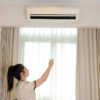Living in a safe and peaceful neighborhood is a top priority for everyone. However, certain signs can indicate that you might be residing in a bad neighborhood. In this article, we will explore the top 26 signs that can help you identify a problematic community. Additionally, we will provide three essential tips to ensure your safety and well-being in such an environment.
How to Recognize a Bad Neighborhood
When searching for a new place to live, it is crucial to assess whether the neighborhood is suitable for your needs. Pay close attention to the following 26 signs that may indicate a bad neighborhood:
1. Excessive Presence of Random Garbage
If you notice scattered random garbage throughout the area, it is a clear indication of a problematic neighborhood. Failure to maintain cleanliness can be a red flag.
2. Proliferation of Graffiti
While graffiti can be considered street art, excessive and unauthorized graffiti on public and private property is a significant annoyance and suggests a deteriorating community.
3. Abundance of Dilapidated or Abandoned Houses
The number of poorly maintained or abandoned houses reflects the overall condition of the neighborhood. If such houses are prevalent, it is a sign of a bad neighborhood.
4. Security Bars on Doors and Windows
Homes with security bars on doors and windows indicate a high level of concern for break-ins and burglaries. If a significant percentage of homeowners take such precautions, it may suggest an unsafe neighborhood.
5. Fences Surrounding Houses
Residents in troubled neighborhoods often erect fences around their properties to keep strangers out. Look for houses with fences, “Beware of Dog” signs, and even fake security signs, which are commonly seen in these areas.
6. Excessive Use of Locks
The excessive use of locks, such as on mailboxes and air conditioning units, can indicate a lack of security and trust within the neighborhood.
7. Broken Car Window Glass in Parking Lots
Instances of broken car window glass, known as the “ghetto diamond,” suggest a higher likelihood of theft and criminal activity in the area.
8. High Unemployment Rate
An area with a high unemployment rate often sees individuals loitering during weekdays. Jobless individuals may resort to criminal activities, posing a potential threat to the community.
9. Prevalence of Homeless Individuals
A neighborhood with a significant population of homeless individuals is generally not a desirable place to reside. Lack of stable housing indicates underlying issues within the community.
10. Unattended Children
The presence of unattended children frequently wandering the streets without parental supervision suggests a lack of safety and proper guardianship in the neighborhood.
Tips for Ensuring Safety in a Bad Neighborhood
Now that you are aware of the signs that indicate a troubled neighborhood, it is crucial to prioritize your safety. Here are three tips to help you stay safe in a bad neighborhood:
1. Install Security Cameras
One of the most proactive measures you can take is to install security cameras in and around your home. Research shows that homes without security systems are significantly more likely to experience break-ins. Security cameras not only deter burglaries but also provide valuable evidence in case of any incidents. Reolink RLC-410 is an excellent security camera option that has proven effective in preventing theft and improving community safety.
2. Remain Vigilant
Enhance your situational awareness by remaining vigilant at all times. When living in a bad neighborhood, consider the following suggestions:
- Plan your routes carefully, choosing well-lit and frequently traveled paths.
- Avoid walking alone, especially during nighttime. Safety in numbers is crucial.
- Familiarize yourself with the locations of nearby police stations for easy access to help when needed.
3. Engage with Your Community
Whenever possible, try to establish connections within your local community. Engaging with your neighbors can provide a sense of belonging and enable you to build a support networkthat looks out for one another. Consider joining or starting a neighborhood watch program to stay informed about local happenings and collectively address safety concerns.
Remember, these tips are applicable not only to residents but also to businesses operating in a bad neighborhood.
Conclusion
Identifying the signs of a troubled neighborhood is essential for your safety and well-being. By recognizing the indicators discussed in this article and following the suggested safety tips, you can navigate a challenging environment with greater awareness and preparedness. Stay proactive, prioritize your security, and seek community engagement to foster a safer and more cohesive neighborhood.









